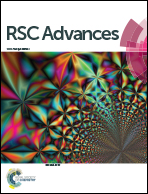Shaping of bacterial community structure in microbial fuel cells by different inocula
Abstract
Understanding how the community structure of anode biofilms is shaped is important for enhancing the performance of microbial fuel cells (MFCs). Activated sludge (AS), garden soil (GS), wastewater (WW) and river sediment (RS) were inoculated into single-chamber MFCs to assess the effects of inocula on the power outputs and microbial communities of MFCs. MFCs with different initial inocula showed differences in acclimation time and power density. MFC-RS (river sediment inoculum) obtained the maximum power density (744.8 mW m−2), followed by MFC-AS, MFC-GS and MFC-WW. Illumina Miseq sequencing of the 16S rRNA gene and comparative analyses indicated that the microbial community structure of established anode biofilms was clearly differentiated from that in the initial inocula. Principal component analysis (PCA) proved that MFC-AS and MFC-GS were closely clustered and were separated from MFC-WW and MFC-RS. The majority of the dominant populations of MFC-RS were affiliated with Azoarcus (45.20%). The most dominant genus belonged to Flavobacterium (14.18%) in MFC-AS, Geobacter (14.40%) in MFC-GS and Azovibrio (11.11%) in MFC-WW, respectively. This study implies that different inocula substantially influenced the community structure of the anode biofilms of MFCs.


 Please wait while we load your content...
Please wait while we load your content...